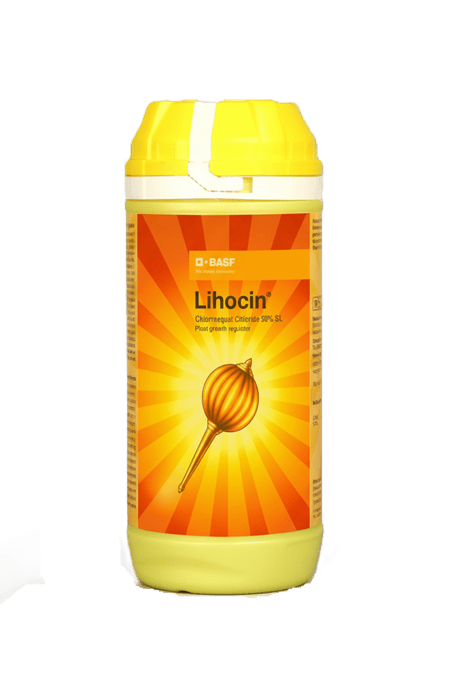
Lihocin by BASF
Share :
Lihocin by BASF : Plant Growth Regulator
In modern agriculture, managing the plant's energy allocation between vegetative growth and reproductive development is key to maximizing yield and quality. Lihocin is a scientifically formulated plant growth regulator (PGR) designed to control excessive vegetative growth and redirect the plant's energy towards flowering and fruiting processes.
Developed by BASF, Lihocin contains Chlormequat Chloride, an active ingredient that helps in channelizing plant growth at critical stages. This results in a more balanced plant structure, leading to improved yield potential and a higher quality of produce in targeted crops.
Key Features and Performance Benefits
Manages Vegetative Growth: Effectively controls excessive shoot elongation, leading to more compact and robust plants.
Enhances Reproductive Growth: By redirecting energy, it promotes better flowering, fruit set, and tuber/boll development.
Improves Yield and Quality: Contributes to a higher number of fruits/bolls and better overall quality of the final harvest.
Crop-Specific Applications: Formulated for effective use in high-value crops like Cotton, Potato, Brinjal, and Grapes.
Application and Dosage Recommendations
For optimal results, Lihocin should be applied at the recommended stages and concentrations for each specific crop.
Cotton (Hybrids & HYVs):
Dosage: 40 - 80 ml per hectare.
Water Volume: 375-600 L/ha (high volume) or 125-187 L/ha (low volume).
Cotton (Local Varieties):
Dosage: 150 ml per hectare.
Water Volume: 375-600 L/ha (high volume) or 125-187 L/ha (low volume).
Grapes: (PHI: 91 Days)
1st Spray: 1000 ml per hectare in 1000 L of water.
2nd Spray: 2000 ml per hectare in 1000 L of water.
3rd Spray: 500 ml per hectare in 1000 L of water.
Brinjal:
Dosage: 100 ppm solution (Mix 1 ml in 10 liters of water).
Potato:
Dosage: 200 ppm solution (Mix 2 ml in 10 liters of water).
A Tool for Precision Crop Management
Lihocin serves as a vital tool for growers seeking to actively manage their crop's development. By ensuring that plant energy is utilized for yield-contributing activities rather than excessive foliage, it helps to achieve a more efficient, productive, and profitable agricultural outcome.

